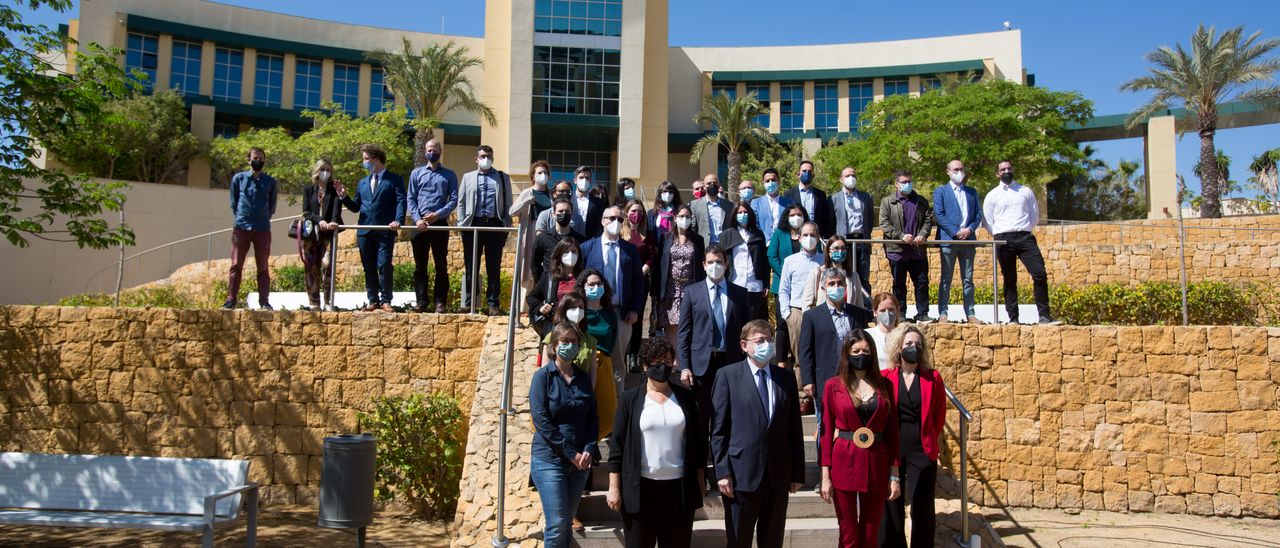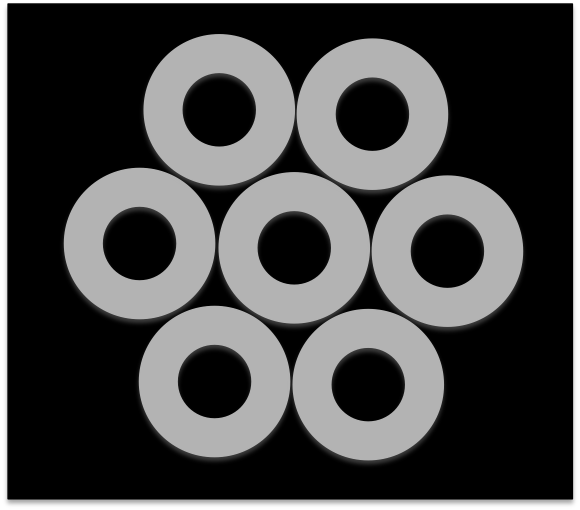News
PhD Thesis successfully defended 12 December 2025
Pablo Martín Luna has successfully defended his PhD thesis at the University of Valencia, titled:
“Advanced Electromagnetic Studies for Particle Acceleration Applications: Magnets, Photomultiplier Tubes and Carbon Nanostructures.”
His work spans an impressive range of complex electromagnetic phenomena with direct relevance to next-generation particle accelerator technologies.
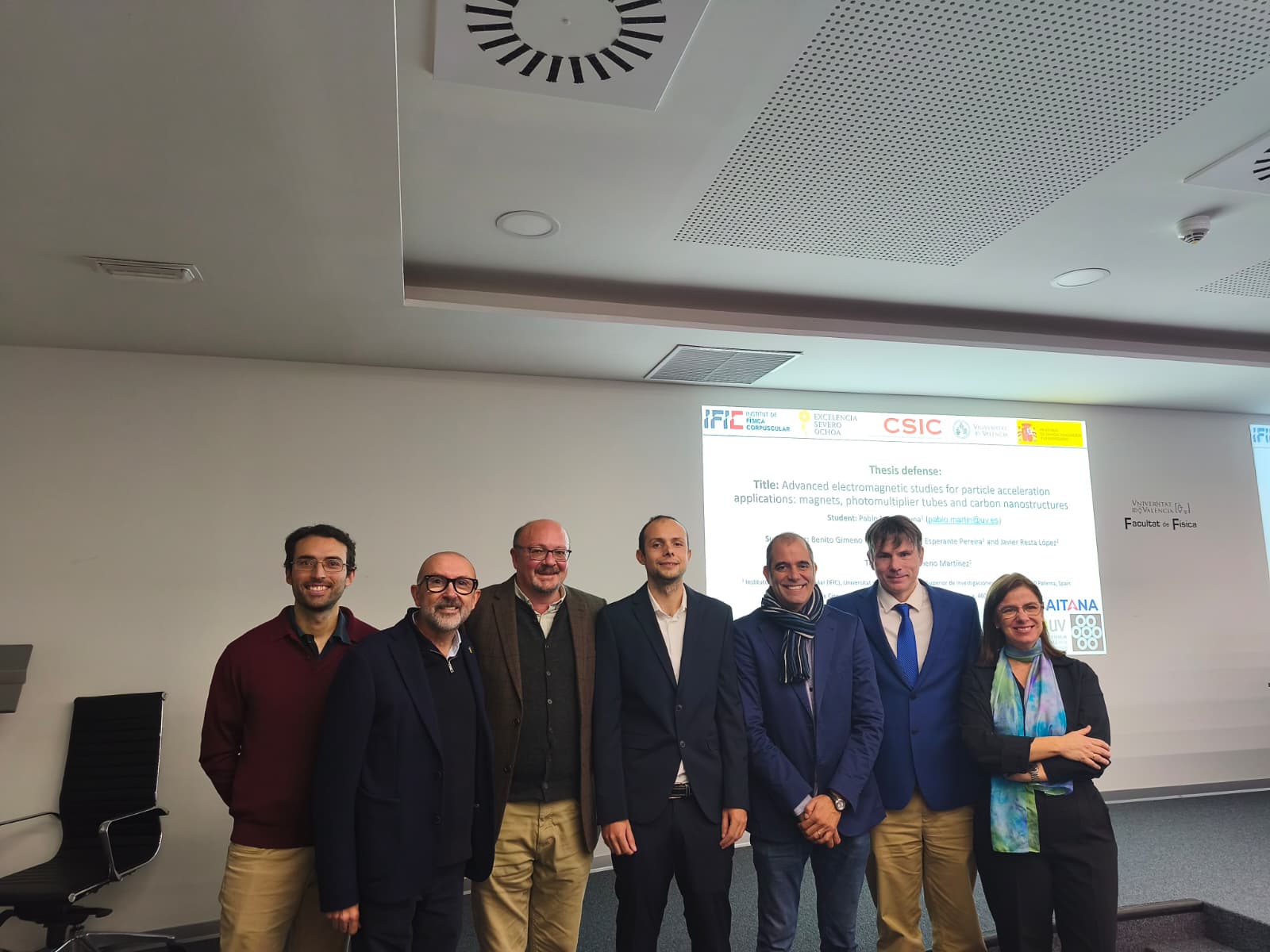
New paper of the NanoAc collaboration 14 November 2025
The NanoAc collaboration has just published a new article in Nature Scientific Reports, showcasing the potential of our micro-accelerator concept to bring self-injected electrons to ultra-relativistic energies.
This chip-scale accelerator opens the door to exciting applications in ultrafast science — including single-shot MeV ultrafast electron diffraction — and offers a promising new approach for generating THz radiation for imaging. These capabilities could have impact across multiple research fields, such as cell biology, surface chemistry, and condensed matter physics.
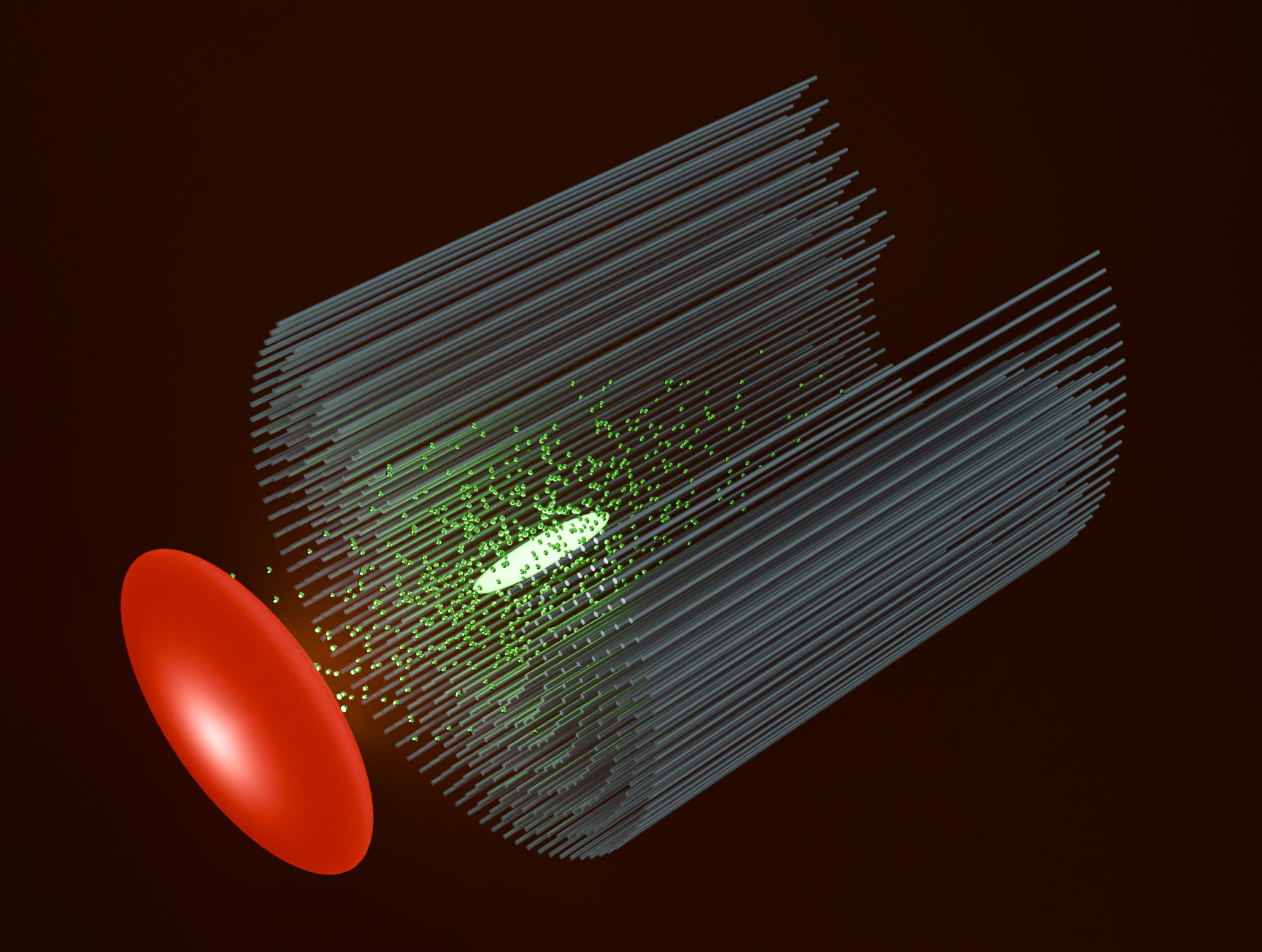
New paper on the cover of PRL 14 November 2025
Our paper on “Coherent Synchrotron Radiation by Excitation of Surface Plasmon Polariton on Near-Critical Solid Microtube Surface” has just been published in Physical Review Letters.
Our research shows how cutting-edge research can make particle accelerators smaller, faster, and more accessible. This has great potential to open up new opportunities in healthcare, imaging, and advanced materials.
Phys. Rev. Lett. 135 (2025) 205001
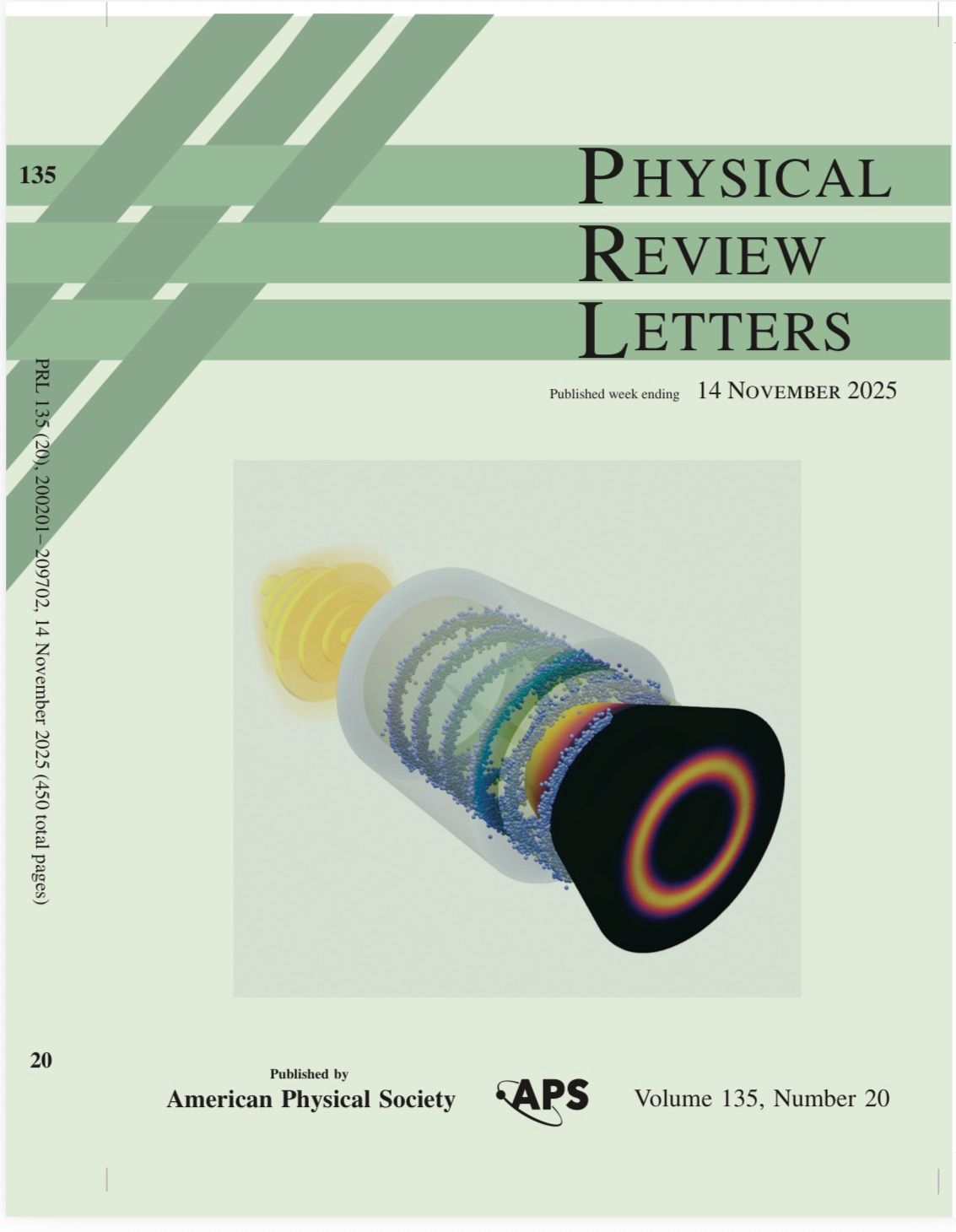
Workshop NanoAc 2025 6-7 November 2025
The third NanoAc Workshop took place in Liverpool on November 6–7, gathering leading researchers and experts from around the world.
This year’s program featured a series of captivating presentations and dynamic discussions highlighting groundbreaking progress in the development of nanometric and micrometric particle accelerators and radiation sources.
Participants explored the latest advancements that are pushing the boundaries of miniaturised accelerator technologies—opening new possibilities in medical applications, materials science, and advanced radiation generation.
Indico webpage for NanoAc 2025
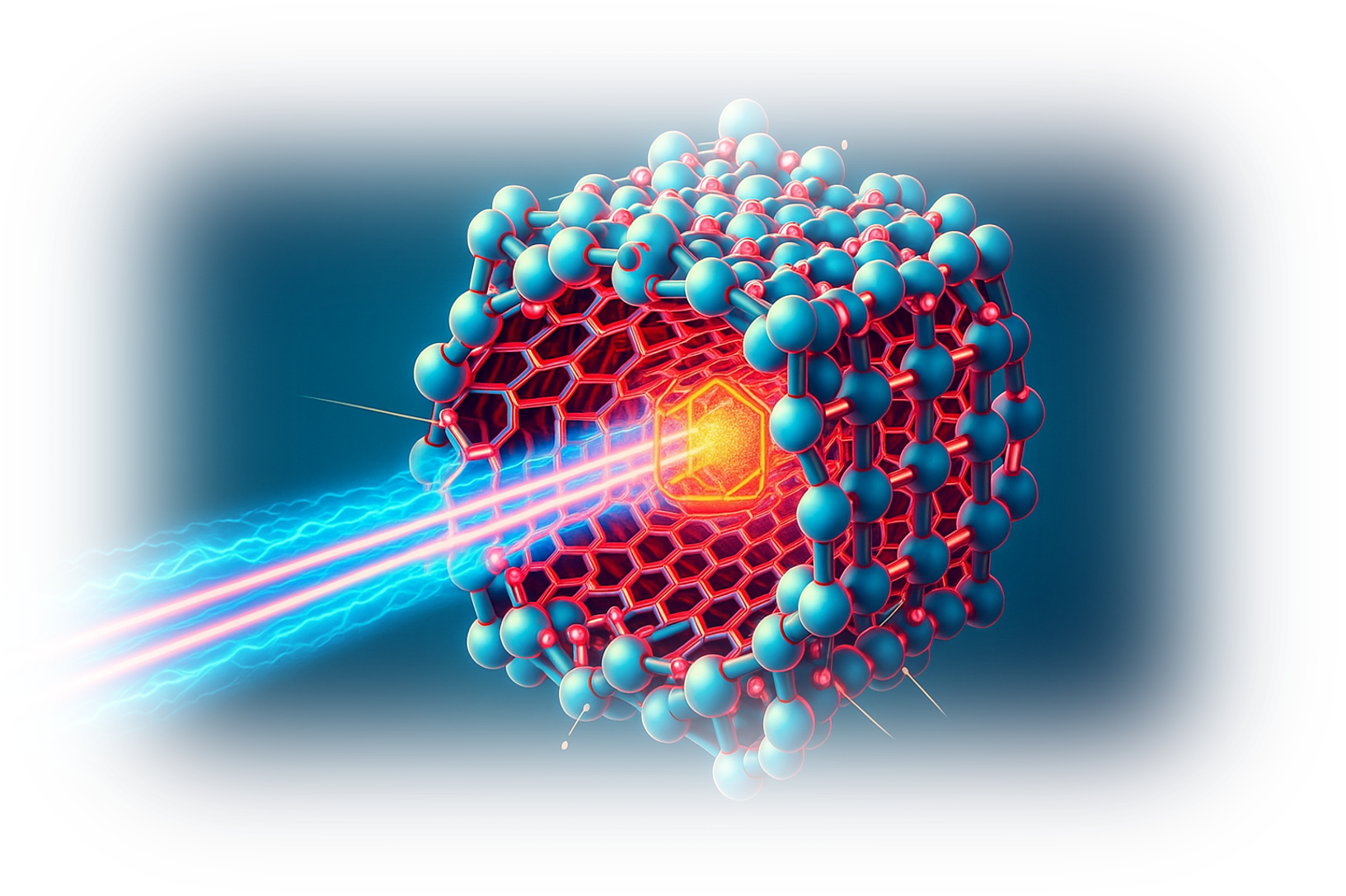
Workshop NanoAc 2024 successfully concluded 17-18 September 2024
We are delighted to share that our recent workshop on Applications of Nanostructures in the field of Accelerator Physics (NanoAc 2024) was a great success! Participants gained valuable insights into both plasma wakefield acceleration and channeling based on nanostructures and engaged in dynamic discussions. A huge thank you to our speakers and attendees for making it an enriching experience. The workshop programme and presentation slides are available on indico:
Indico webpage for NanoAc 2024
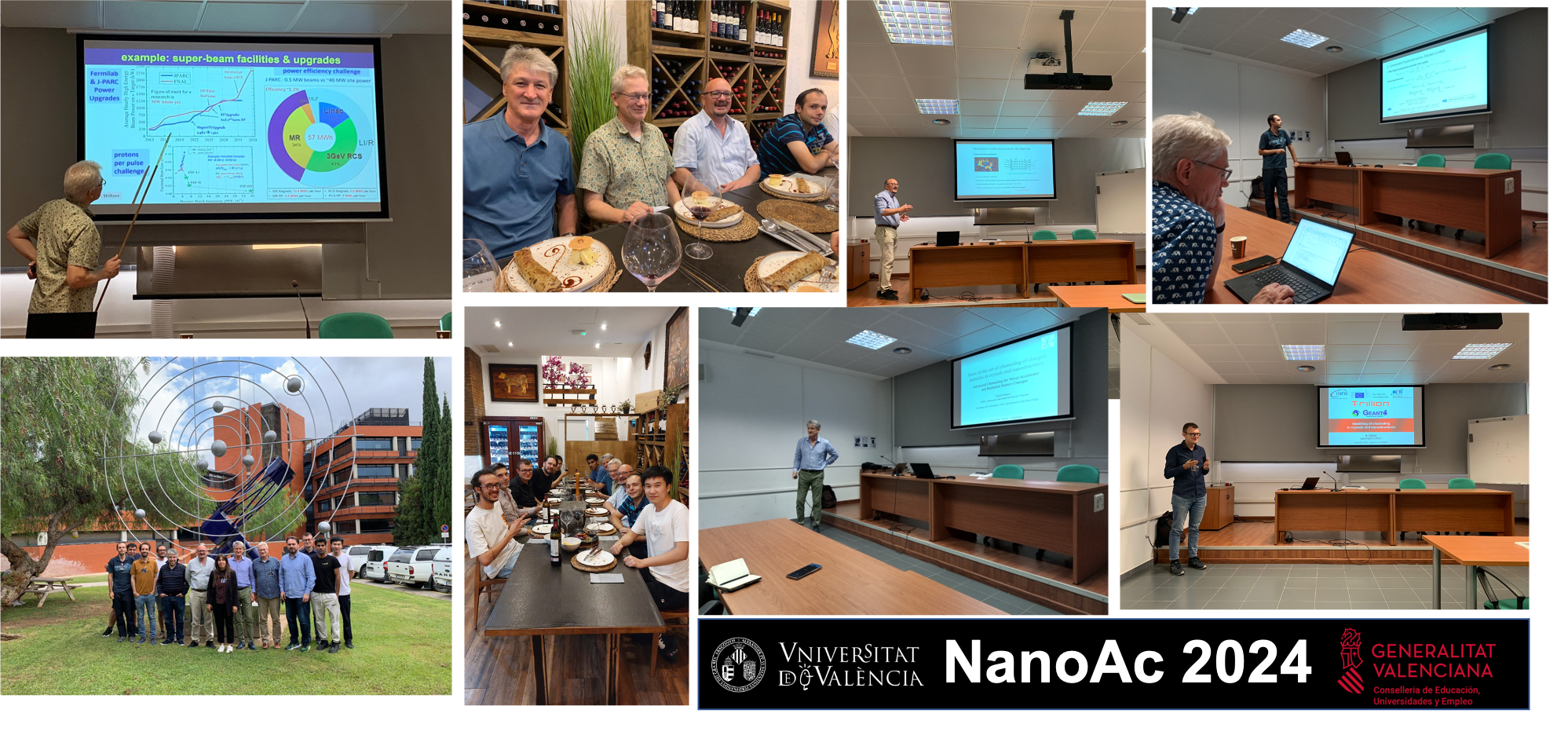
Open registration for NanoAc 2024 2 April 2024
We have started to organise the 2nd Workshop on Applications of Nanostructures in the Field of Accelerator Physics (NanoAc 2024), which is scheduled to take place in Valencia, Spain, from 17th to 18th September this year. Registration is already open.
Indico webpage for NanoAc 2024
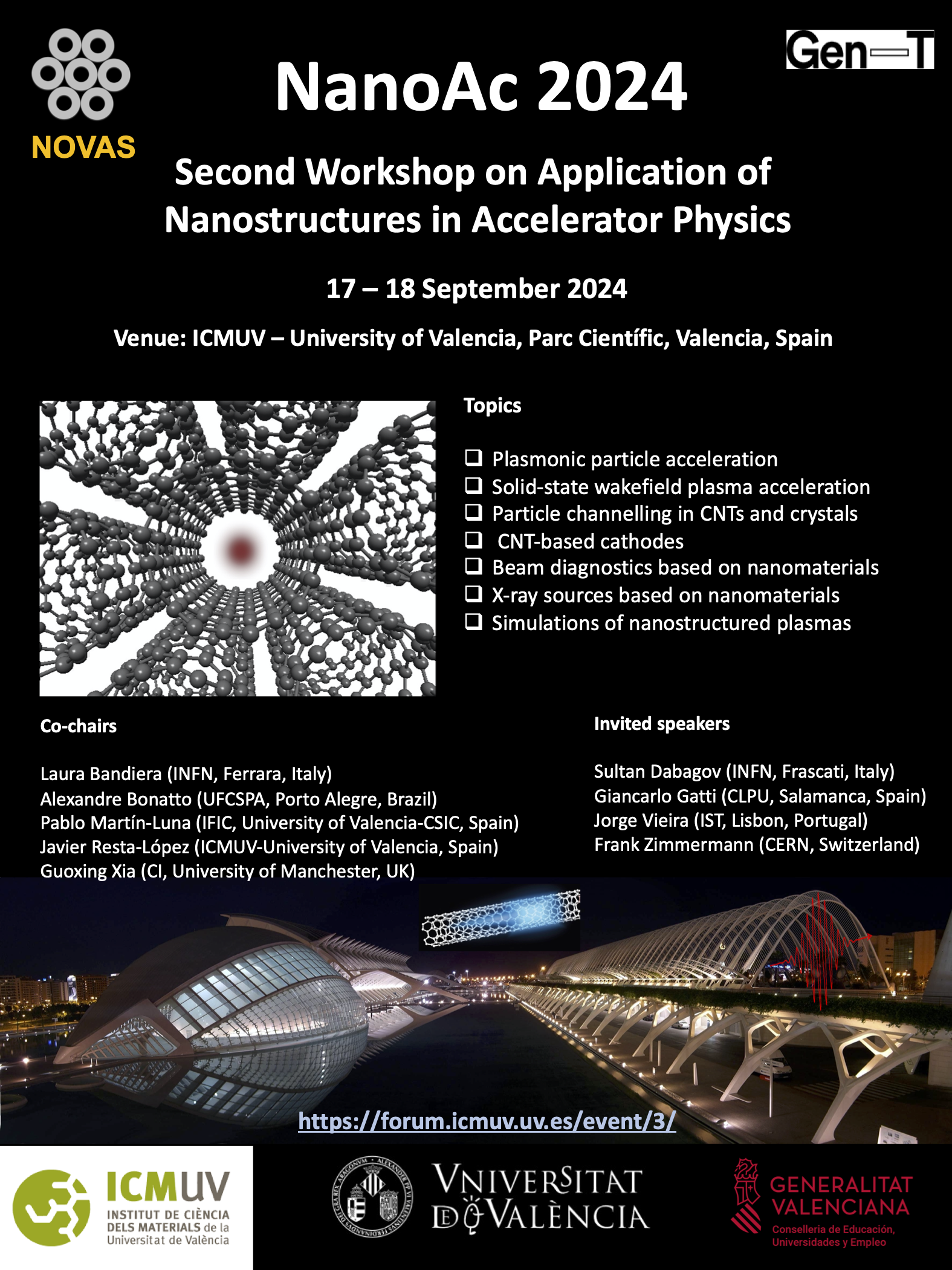
Publication of book chapter: "Excitation of Plasmonic Wakefields in Multi-Walled Carbon Nanotubes: A Hydrodynamic Approach", 28th March 2024
"The interactions of charged particles with carbon nanotubes (CNTs) may excite plasmonic modes in the electron gas produced in the cylindrical graphene shells that constitute the carbon nanotube walls. These excitations have recently been proposed as a potential novel method of short-wavelength-high-gradient particle acceleration that may revolutionize particle acceleration techniques. In this chapter, we review a theory based on a linearized hydrodynamic model to describe the electronic excitations on the nanotube walls produced by a point-like charge moving paraxially through multi-walled CNTs. In this model, the plasmonic excitations on the nanotube surfaces are described considering the electron gas as two-dimensional plasma with additional contributions to the fluid momentum equation from specific solid-state properties of the gas. Analytical expressions of the excited longitudinal and transverse wakefields are derived. These general expressions are particularized for the case of single- and double-walled nanotubes, relating them with the resonant frequencies obtained from the dispersion relation. The dependence of the wakefields on the parameters of the model such as the particle velocity, the nanotube radii and the surface density is analyzed. Finally, a comprehensive discussion is presented, addressing the feasibility and potential limitations of employing the linearized hydrodynamic theory for modelling CNT-based particle acceleration". The full chapter is completely available at the following link:
DOI: 10.5772/intechopen.114270
Can we accelerate charged particles in CNTs? 14th Dec. 2023
We have just published a paper in New Journal of Physics where, using a hydrodynamic model, we investigate the possibility of exciting surface plasmonic modes which might induce high acceleration gradients inside single wall CNTs. The plasmonic excitation is driven by a point-like charged particle. Optimal parametric configurations have been investigated as well as the limitations of the model. The article is completely available at the following link:
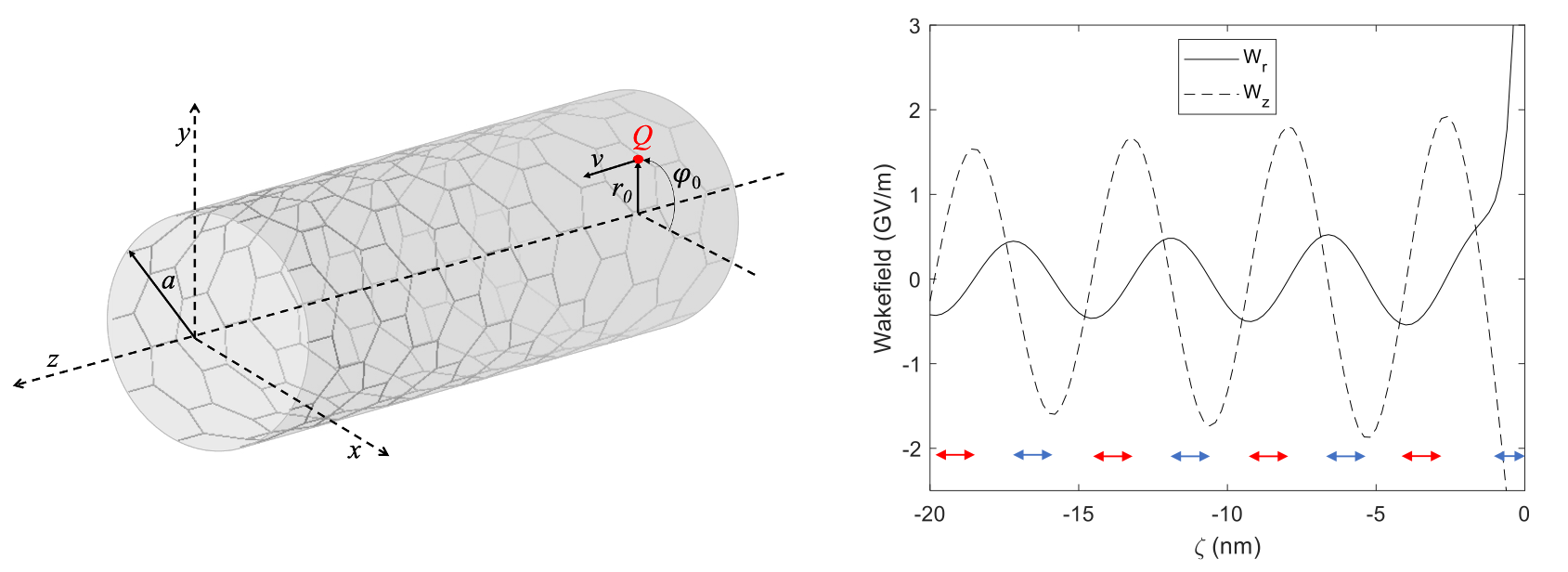
Successful Master Thesis defense, 30th August 2023
We are pleased to announce that Mr. Aras Amini has completed an internship within the NOVAS team at the ICMUV. Aras commenced his internship with us on March 20, 2023, and over the course of five months, he has exhibited exceptional dedication and accomplishment in his role, culminating in the successful completion of his Master's project titled "Modeling Ultra-High Accelerating Gradients in Carbon-Based Nanostructures Through an Effective Plasma-Density Approach." More concretely, he has developed a robust model of the investigated system, particularly a "solid-state" plasma simulation that accurately mirrored a multi-channel structure akin to a carbon nanotube (CNT) array. On the 30th of August he successfully defended his Master Thesis at the Paris-Saclay University in France in the frame of the European network Erasmus Mundus LASCALA
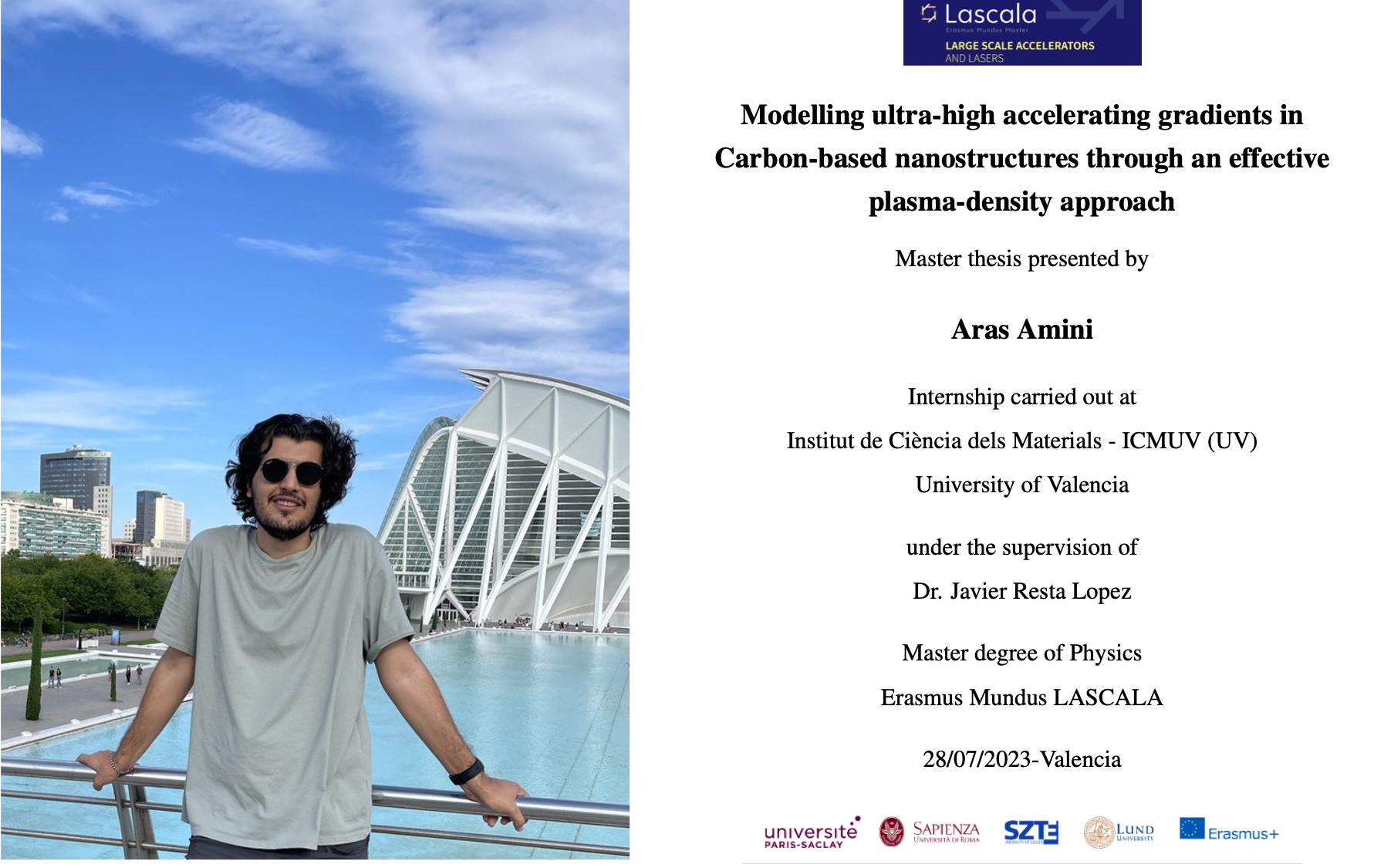
Contributions to IPAC23, 7 - 12 May 2023
This year's IPAC edition has taken place in Venice (Italy) from May 7 to 12. We have presented several posters on solid-state plasma wakefield acceleration as well as the design of the ISOLDE Superconducting Recoil Separator (ISRS) for radioactive isotopes. Furthermore, it is worth remarking that Moisés Barberá and Pablo Martín, both PhD students and NOVAS members, were granted a IPAC student grant to attend this event. The complete programme of the conference and further information is available on the following page:
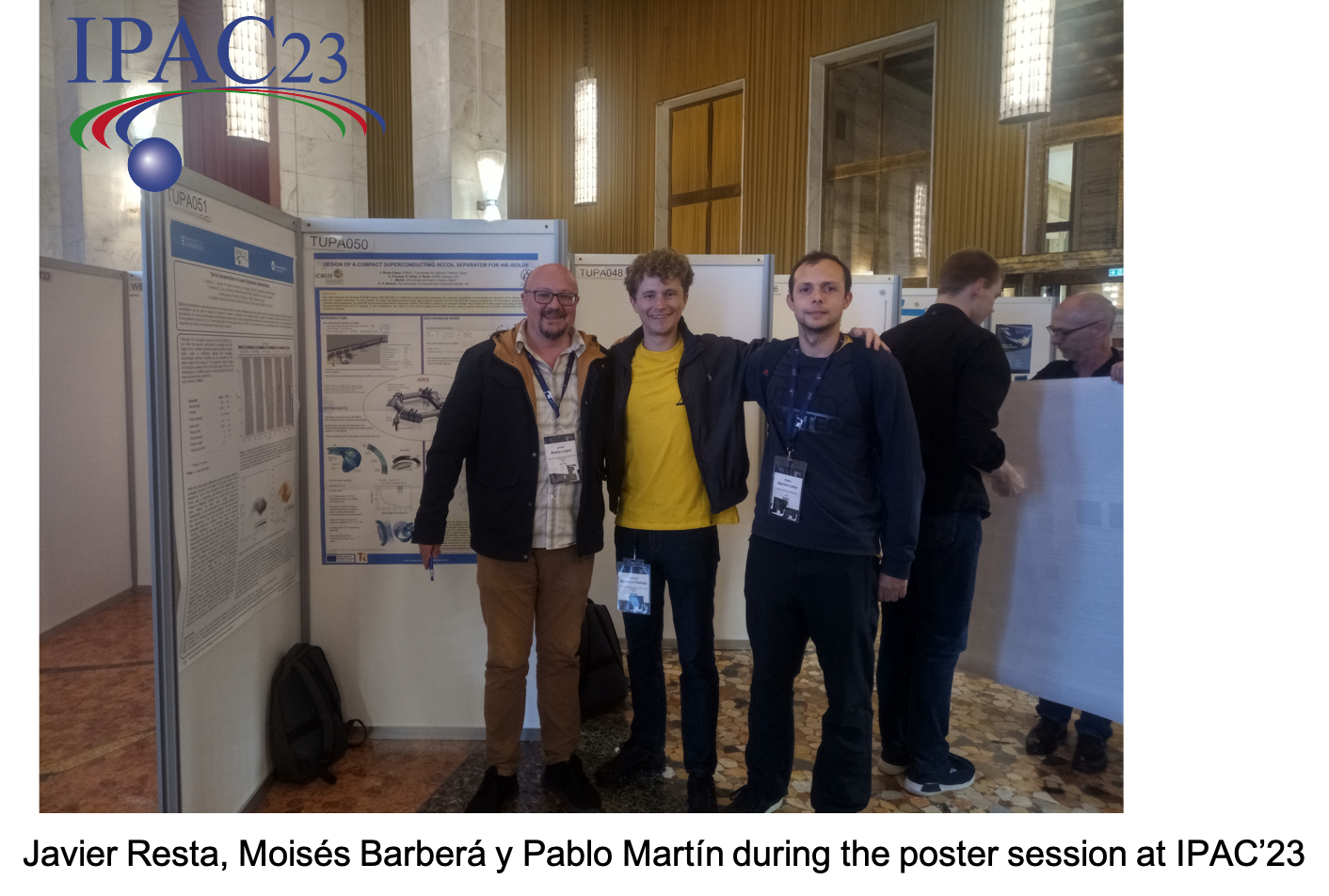
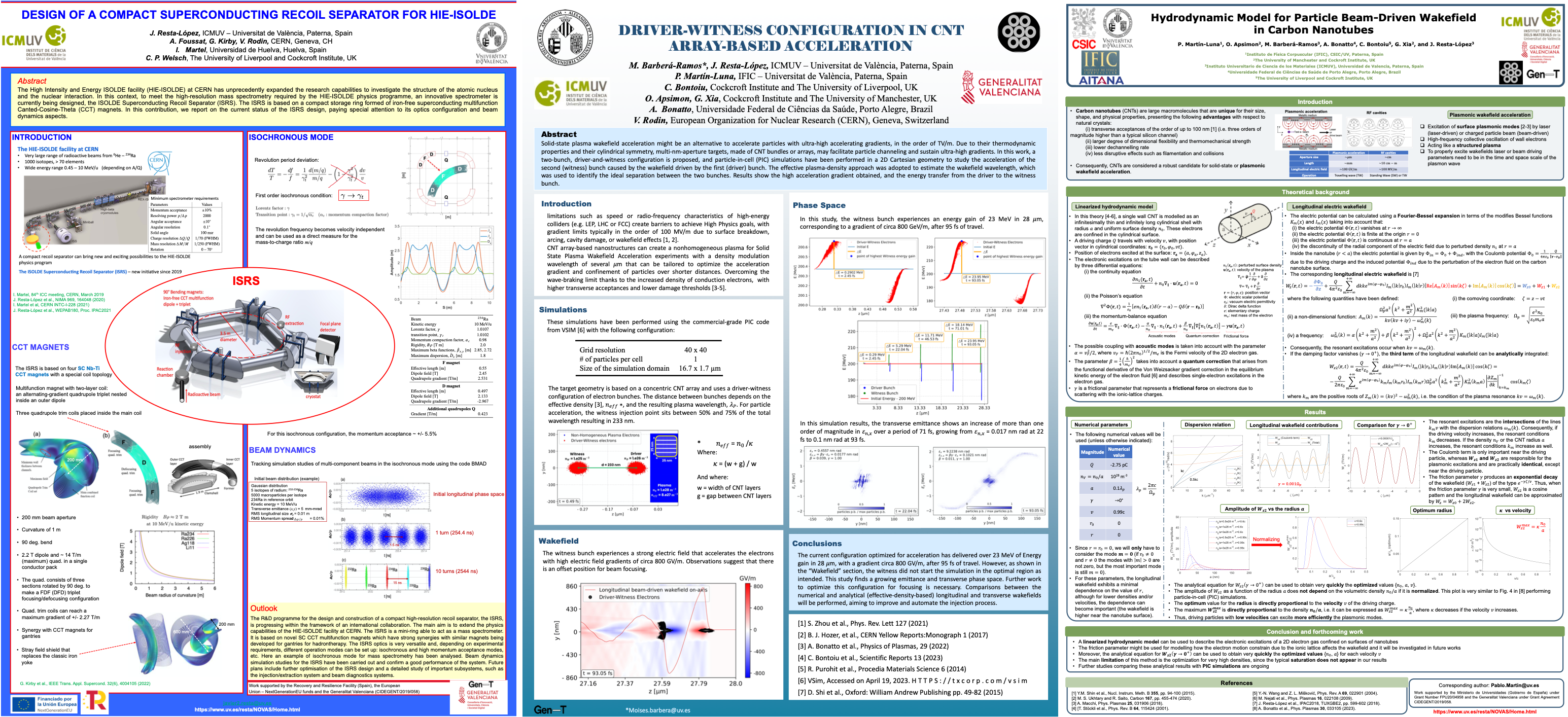
New paper on ISRS published, 21st April 2023
The ISRS collaboration has recently published an article summarising the progress on the design of the most compact synchrotron ever to be used as a mass spectrometer. The document is available in:
Seminar on "Future Particle Accelerators Beyond The LHC" at the University of Huelva, 23rd March 2023
Javier Resta has visited the Faculty of Experimental Sciences of the University of Huelva during the days 22-24 of March under the invitation of Prof. Ismael Martel Bravo. Javier has had the opportunity to visit the fantastic Laboratory of Accelerator Instrumentation and Sensors led by Prof. Martel, and had the chance to give a seminar on "Future Particle Accelerators Beyond The LHC". We thank Ismael Martel and his team for this invitation and the warm welcome and look forward to continuing our fruitful collaboration in the project ISRS.
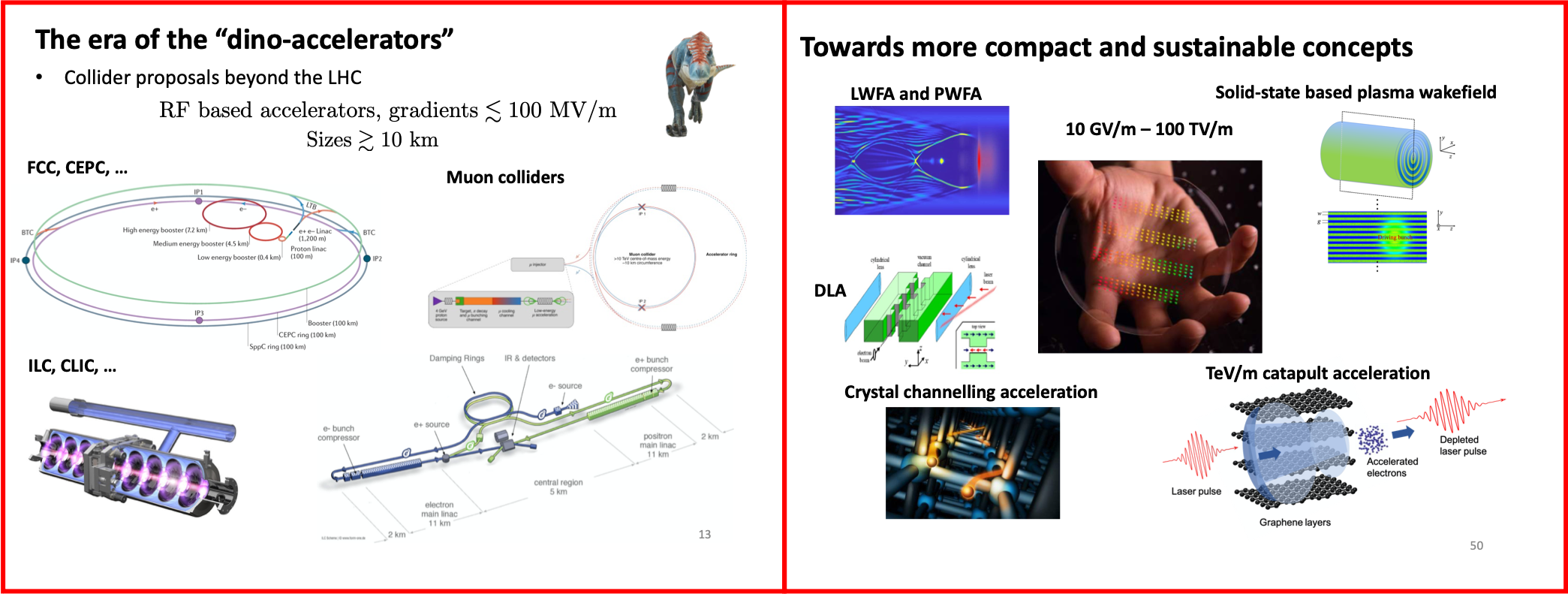
TeV/m Catapult Electron Bunch Acceleration, 24th January 2023
Can graphene layers be used for self-injection and acceleration of ultra-short electron bunches at relativistic energies? Novel particle acceleration mechanism revealed. Find more at:
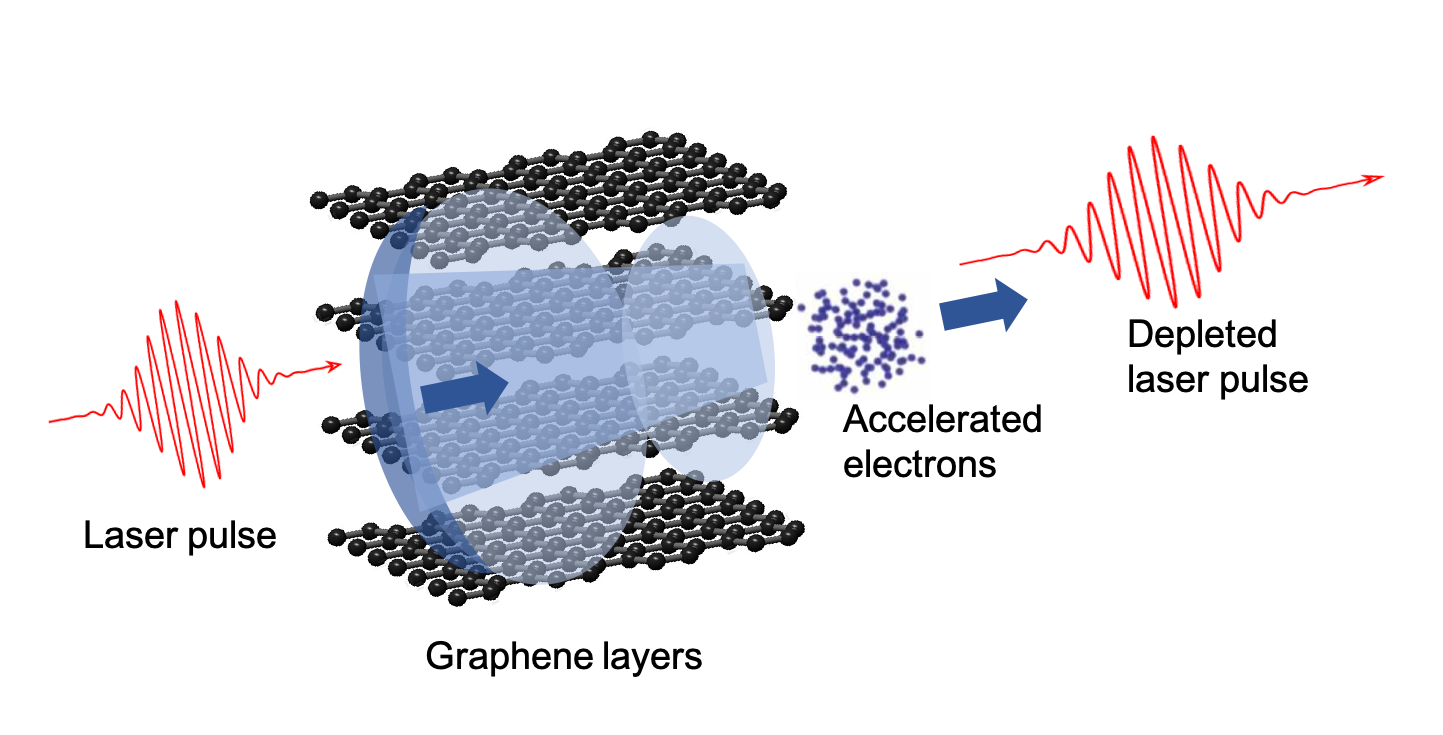
Workshop on Application of Nanostructures in the Field of Accelerator Physics, NanoAc 2022, 22 - 23 November 2022
From 22nd to 23rd of November, the Workshop on Application of Nanostructures in Accelerator Physics, NanoAc 2022, took place at the Science Park of the University of Valencia. This event, organised by the NOVAS team, has been the first workshop dedicated to this topic, where the use of nanostructures and metamaterials in the field of particle accelerators has thoroughly been analysed and discussed, from the use of carbon nanotubes as cathodes for the production of electron beams, to the use of graphene layers as a medium to produce and accelerate ultra-short electron beams to relativistic energies. The event has attracted several experts from the accelerator physics, plasma physics, and solid state physics communities, registering a total number of 23 participants from various national and international institutions and universities. During the two days of the event, 11 talks and several debate sessions were held. The complete programme of the workshop, including slides of all the talks, is available on the following page:
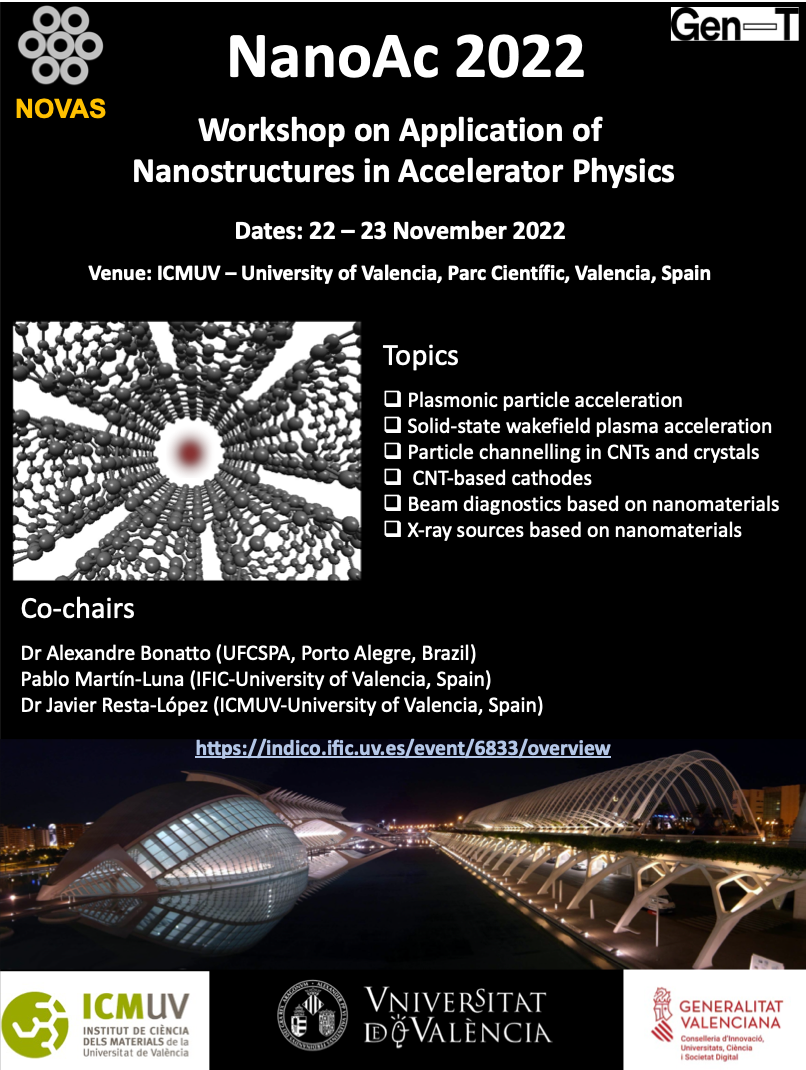
Publication of book chapter on Future Particle Accelerators, 21st September 2022
"Particle accelerators have enabled forefront research in high energy physics and other research areas for more than half a century. Accelerators have directly contributed to 26 Nobel Prizes in Physics since 1939 as well as another 20 Nobel Prizes in Chemistry, Medicine and Physics with X-rays. Although high energy physics has been the main driving force for the development of the particle accelerators, accelerator facilities have continually been expanding applications in many areas of research and technology. For instance, active areas of accelerator applications include radiotherapy to treat cancer, production of short-lived medical isotopes, synchrotron light sources, free-electron lasers, beam lithography for microcircuits, thin-film technology and radiation processing of food. Currently, the largest and most powerful accelerator is the Large Hadron Collider (LHC) at CERN, which accelerates protons to multi-TeV energies in a 27 km high-vacuum ring. To go beyond the maximum capabilities of the LHC, the next generation of circular and linear particle colliders under consideration, based on radiofrequency acceleration, will require multi-billion investment, kilometric infrastructure and massive power consumption. These factors pose serious challenges in an increasingly resource-limited world. Therefore, it is important to look for alternative and sustainable acceleration techniques. This chapter pays special attention to novel accelerator techniques to overcome present acceleration limitations towards more compact and cost-effective long-term future accelerators." Find more at:
Lecture on Novel High Gradient Particle Accelerators, 8th July 2022
Pablo Martín Luna has contributed a very comprehensive lecture to the Erasmus Summer School organised by the Physics Faculty at the University of Valencia from 4th to 8th July. Slides are available under request.
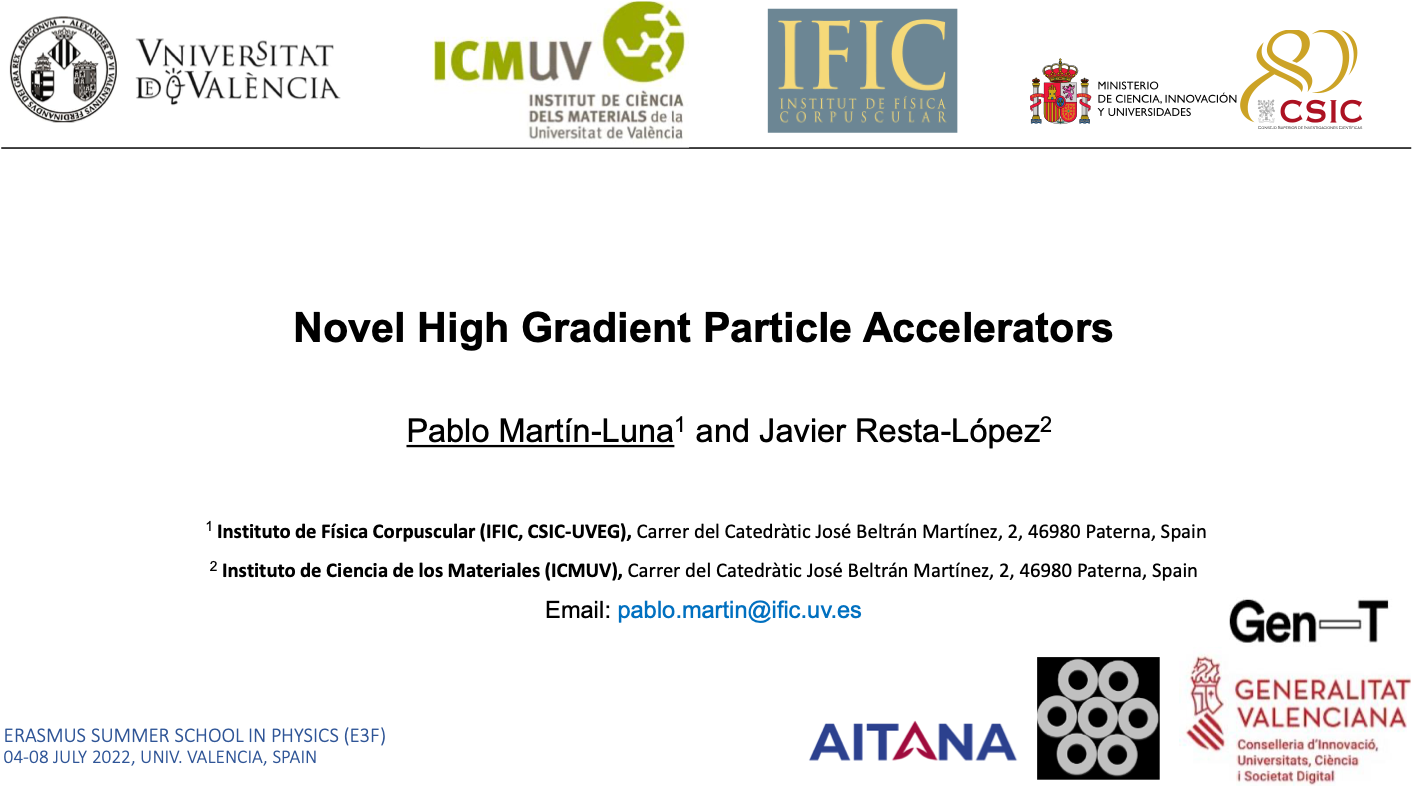
Visit of Dr Volodymyr Rodin, 26th June - 3rd July 2022
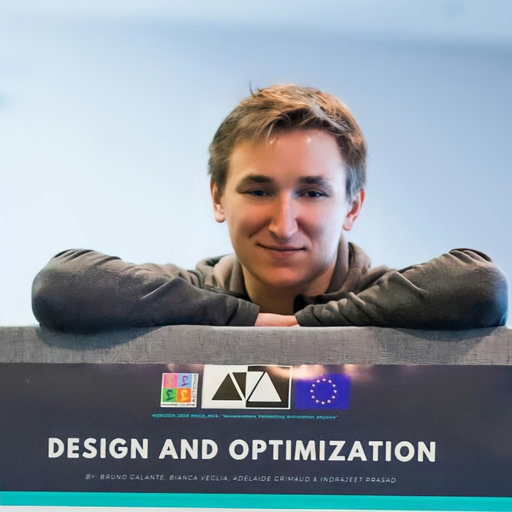
Contribution to IPAC22, 12 - 17th June 2022
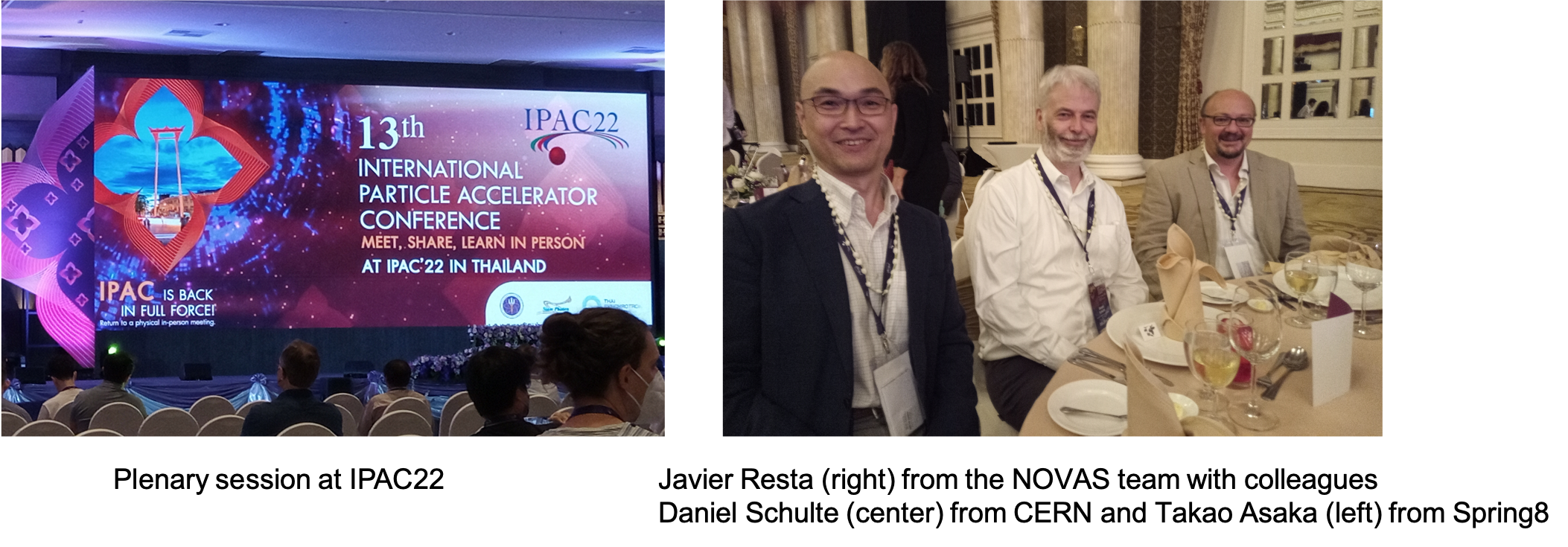
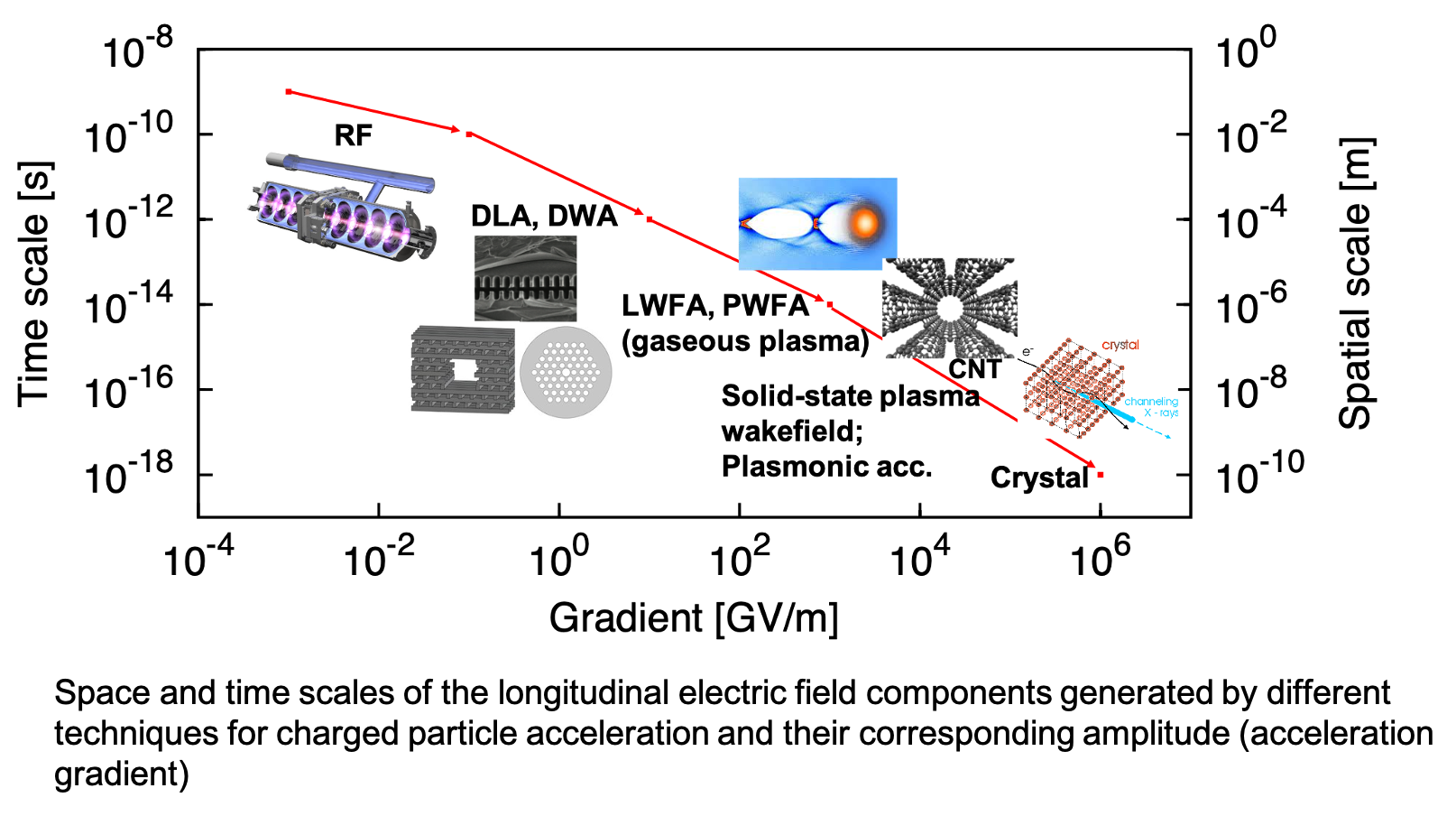
Proposal of a novel and innovative particle acceleration technique, 22nd March 2022
. Find more at:
Plasmonic accelerators for colliders with PetaVolts per meter gradients
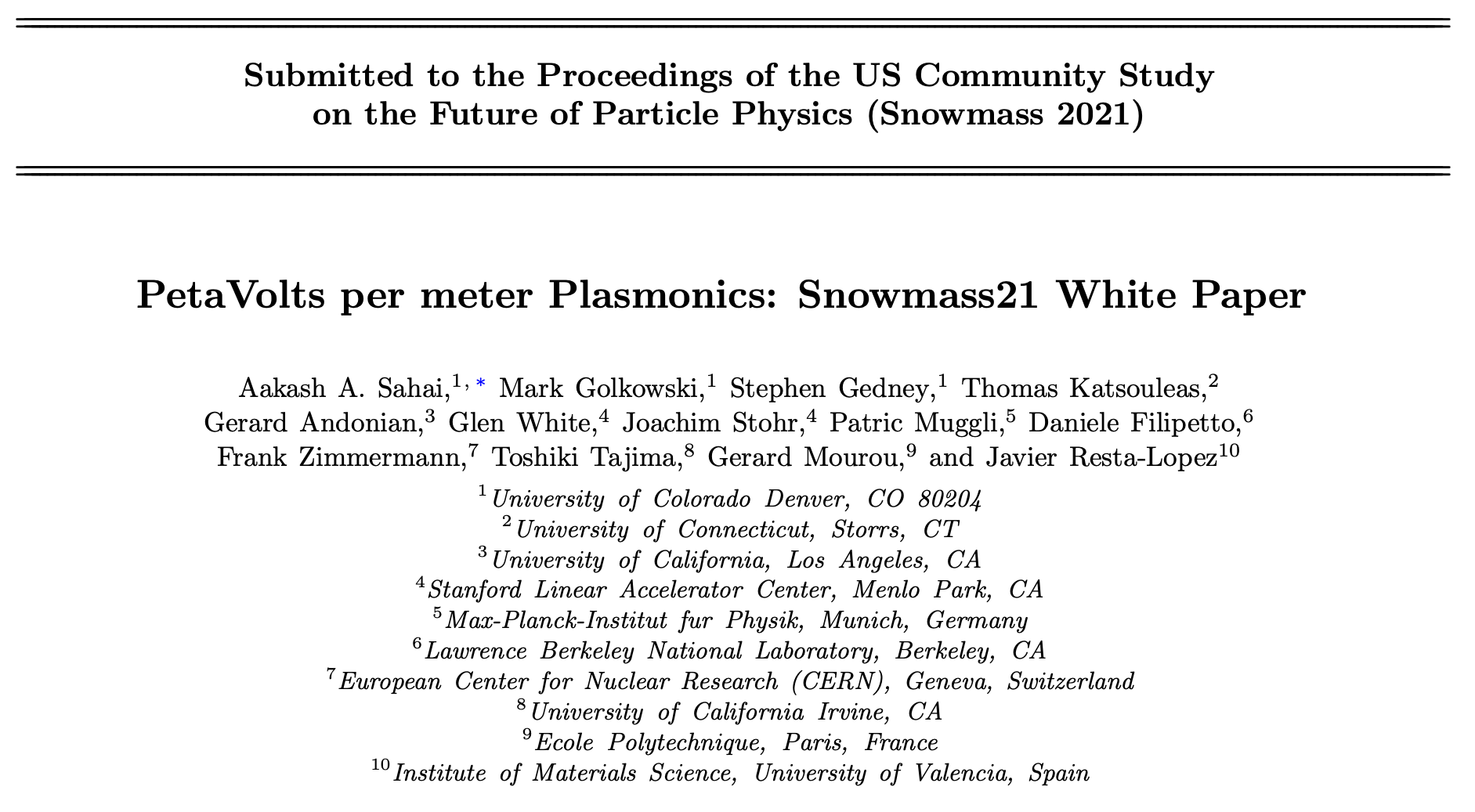
New paper published on innovative superconducting CCT curved magnet, 15th March 2022
. Find the article at:
Superconducting Curved Canted–Cosine–Theta (CCT) for the HIE-ISOLDE Recoil Separator Ring at CERN
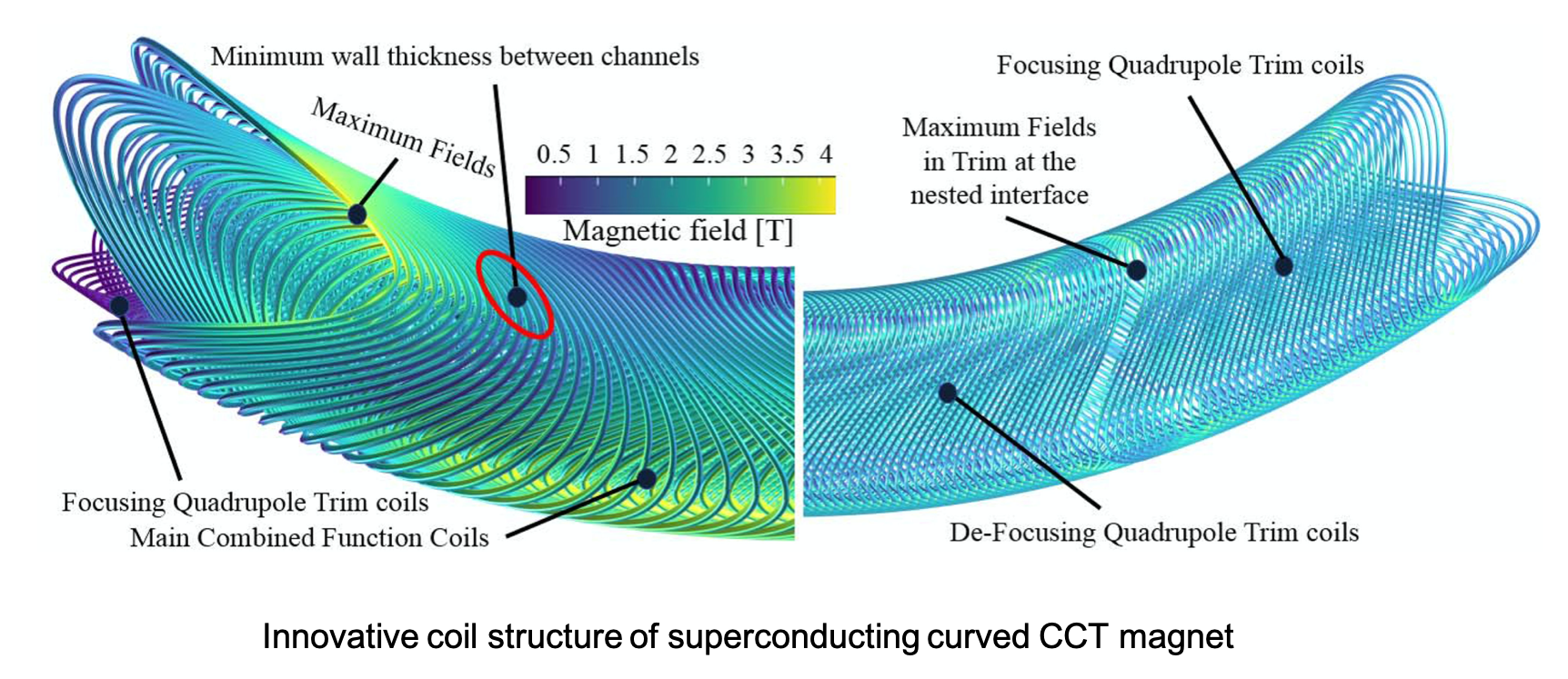
ISRS CCT Workshop, 6th Jan. 2022
In the context of the ISRS (ISOLDE Superconducting Recoil Separator) project, a one day virtual Workshop took place on the 6th January 2021 to discuss the present status and prospects of the design and development of a very compact superconducting recoil separator of radioactive isotopes named ISRS. The most recent ISRS conceptual design is based on innovative Canted-Cosine Theta (CCT) magnets, which are currently being designed at CERN. We contributed to this event with a presentation on the ISRS optics design and the necessary CCT magnet specifications. More details at the following link:
Design and Beam Dynamics Studies of the ISRS: Requirements for the Magnets
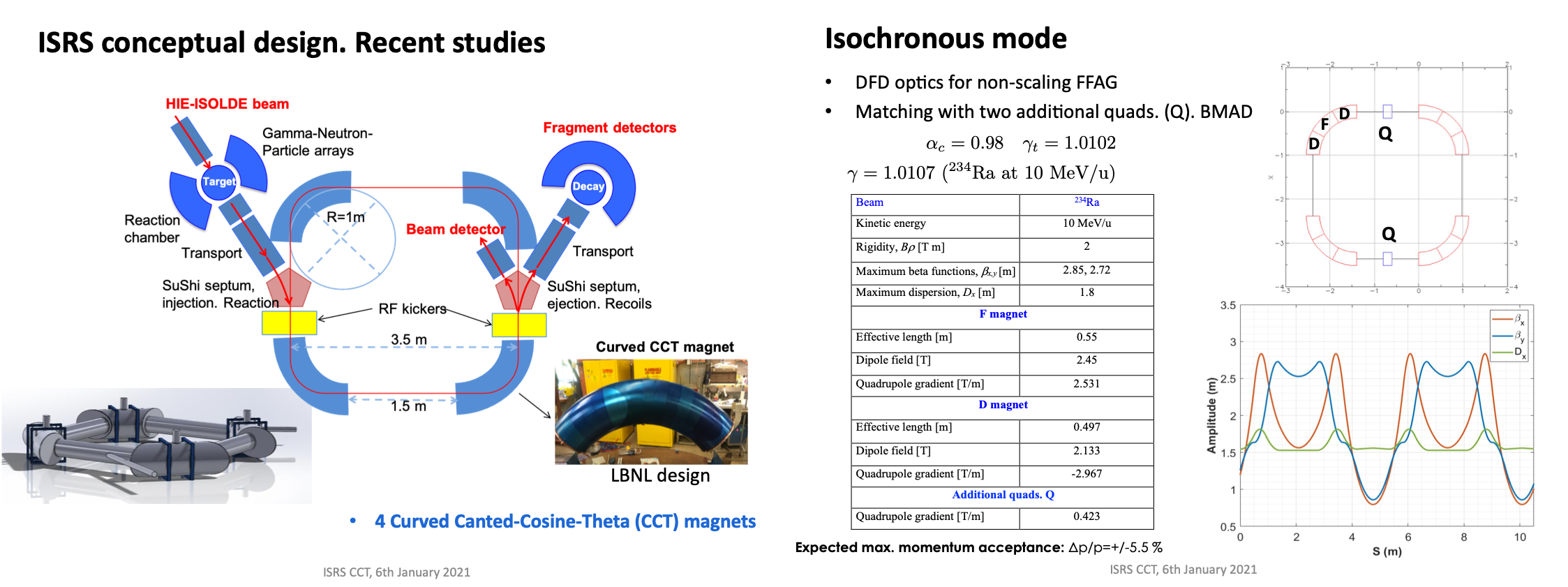
Paper on CNTs as cold electron field emitters published, 9th Nov. 2021
In the framework of a collaboration between CERN, The University of Liverpool and The University of Valencia, we have published a paper on the use of carbon nanotube arrays as cold electron field emitters and their application to the electron gun of electron coolers of low energy antimatter facilities, such as the ELENA (Extra-Low ENergy Antiproton) ring at CERN. The use of a CNT based electron gun in the ELENA cooler, aside from hopefully decreasing the electron beam temperature, would also allow simplification of the gun arrangement, eliminating the necessity of a heating filament, thus making the conditioning process faster and simpler, while at the same time achieving a more efficient electron cooling process. Furthermore, the results of this research are important well beyond the specific application of the beam cooling in antimatter facilities, since the generation of high quality electron beams is essential in many different applications and this technique shows exciting prospects. More information:
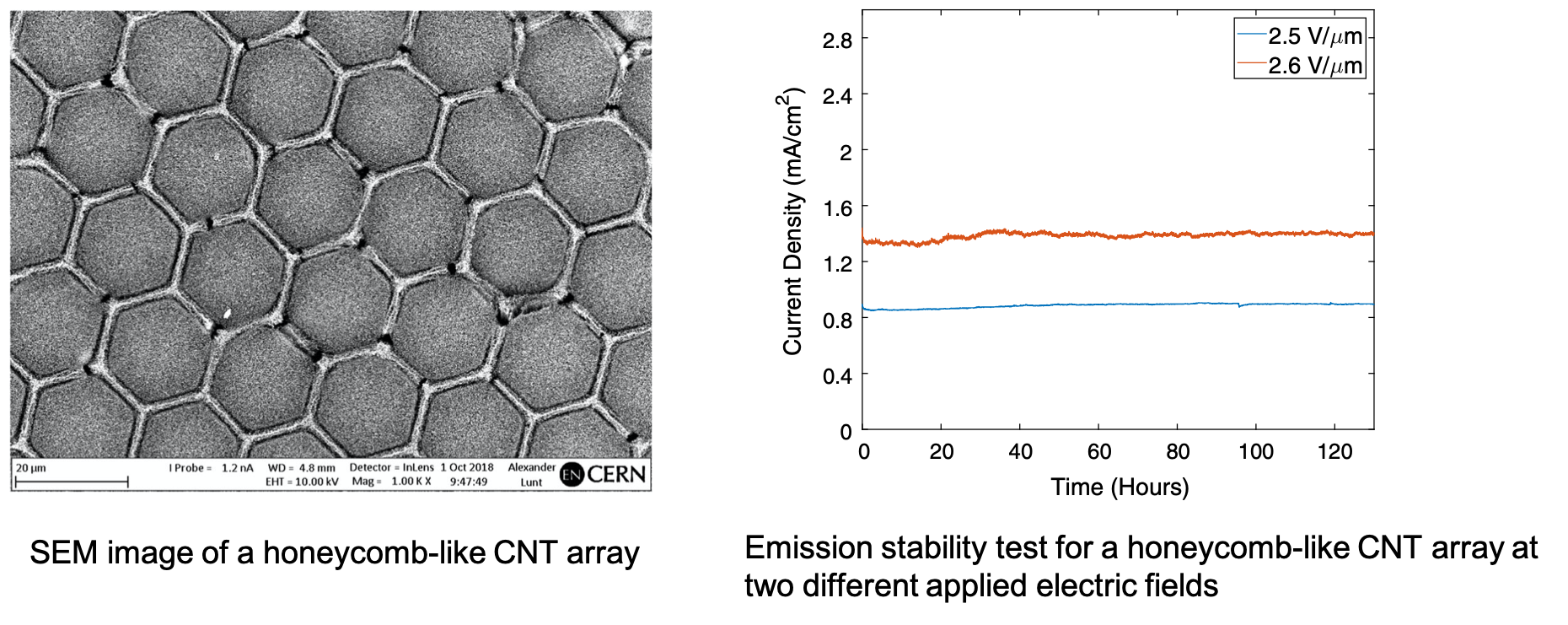
New NOVAS member, Nov. 2021
Pablo Martín Luna has been granted a PhD (FPU) fellowship by the Spanish Ministry of Universities and will contribute to the NOVAS project. Welcome!!!
Contributions to IPAC21, 24 - 28th May 2021
This year the 12th International Particle Accelerator Conference (IPAC'21) has taken place virtually, and we have contributed to it presenting our latest progress and results.
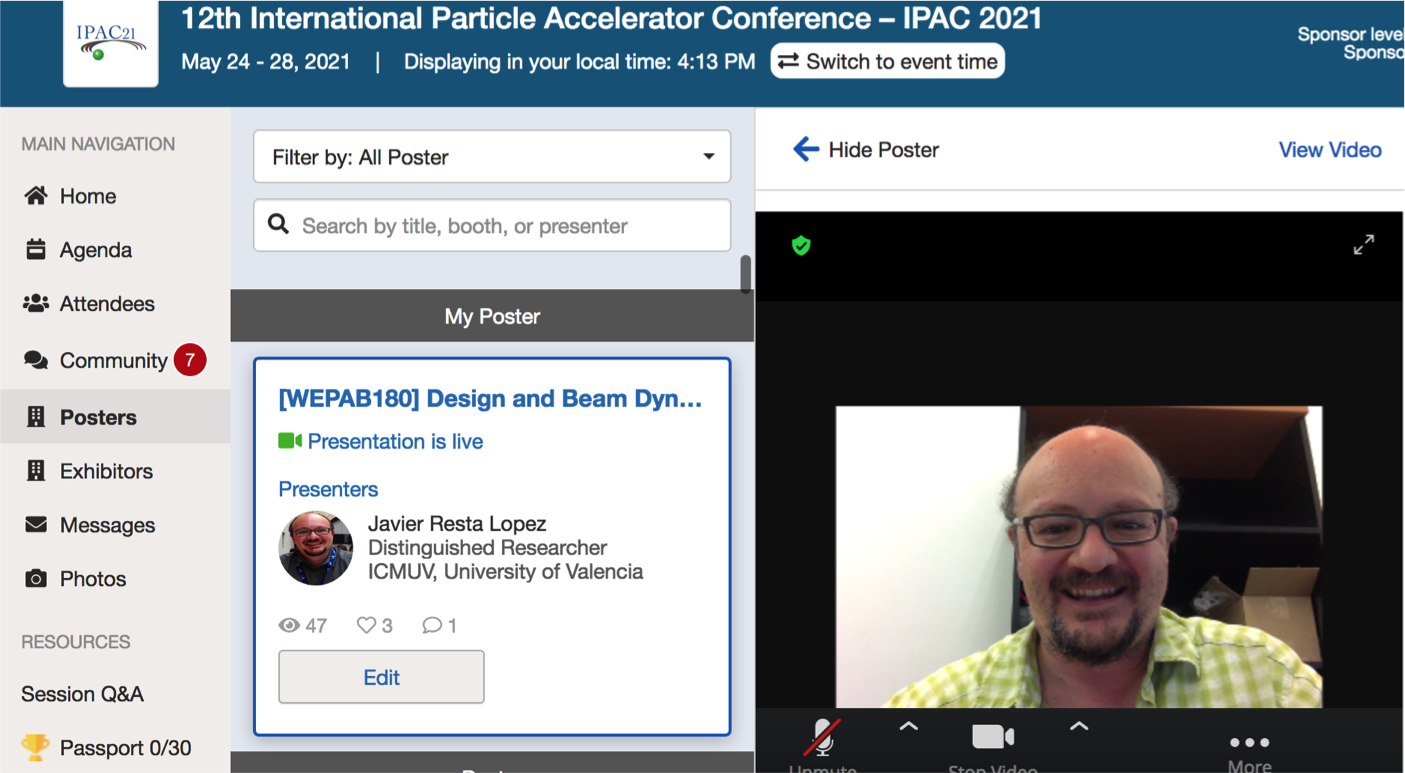
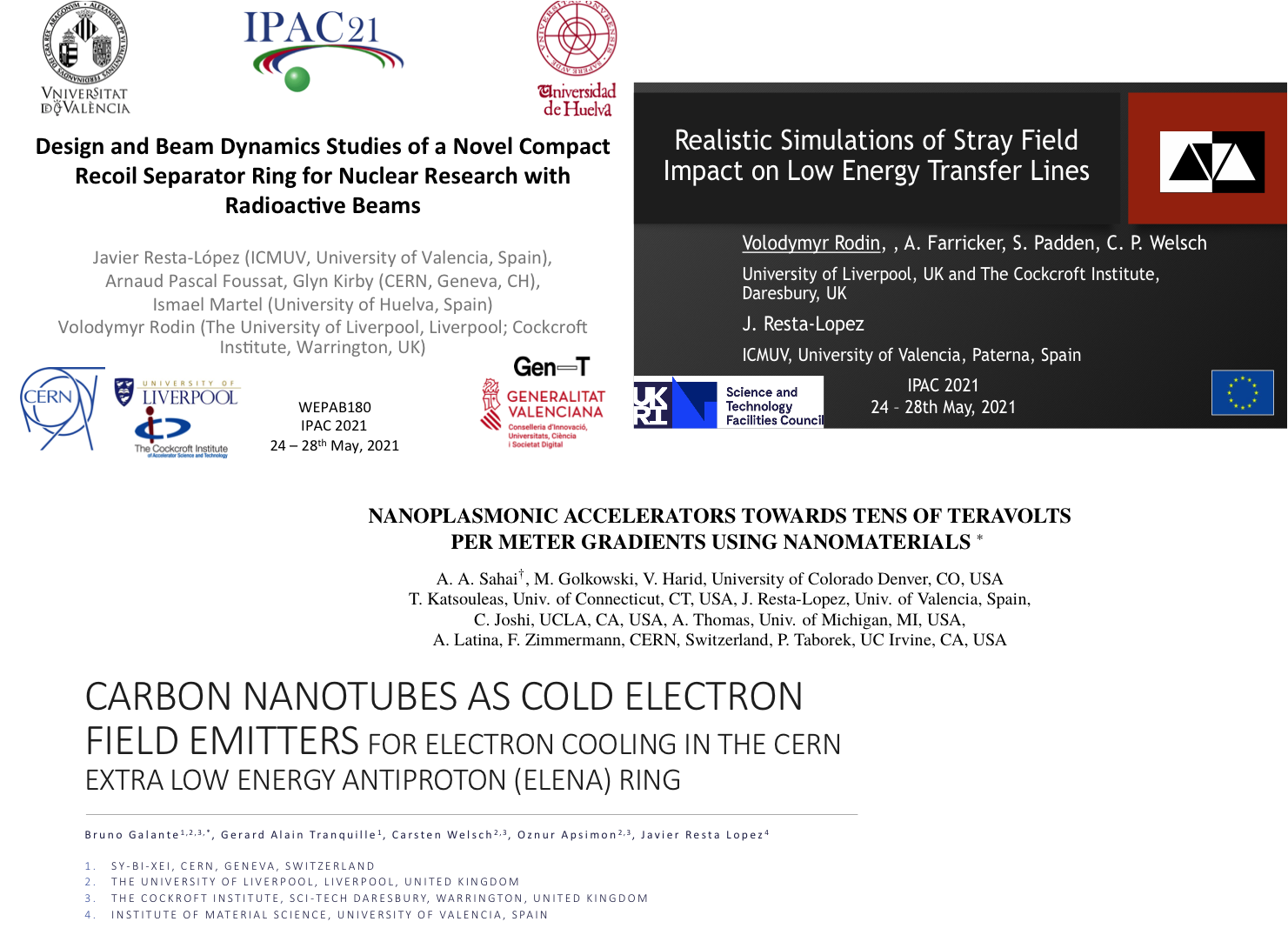
Celebration of the 3rd Anniversary of the Gen-T program, 4th May 2021
The Gen-T program was created by the Generalitat Valenciana in 2017 with the aim of attracting, retaining and consolidating the career of researchers of international excellence. On the 4th of May Gen-T awarded researchers, among them Javier Resta López, PI of the NOVAS project, joined the President of the Generalitat and other political and academic authorities to celebrate the 3rd Anniversary of the Gen-T program. This event took place in La Ciudad de la Luz in Alicante.
